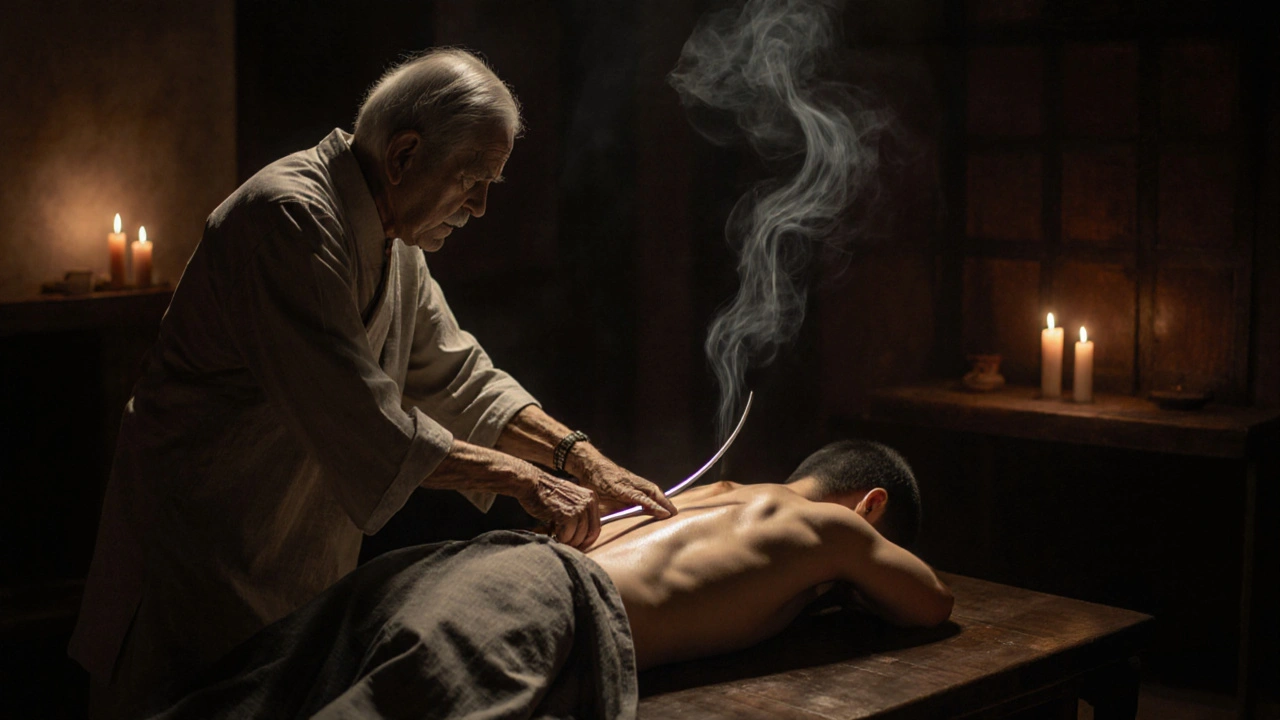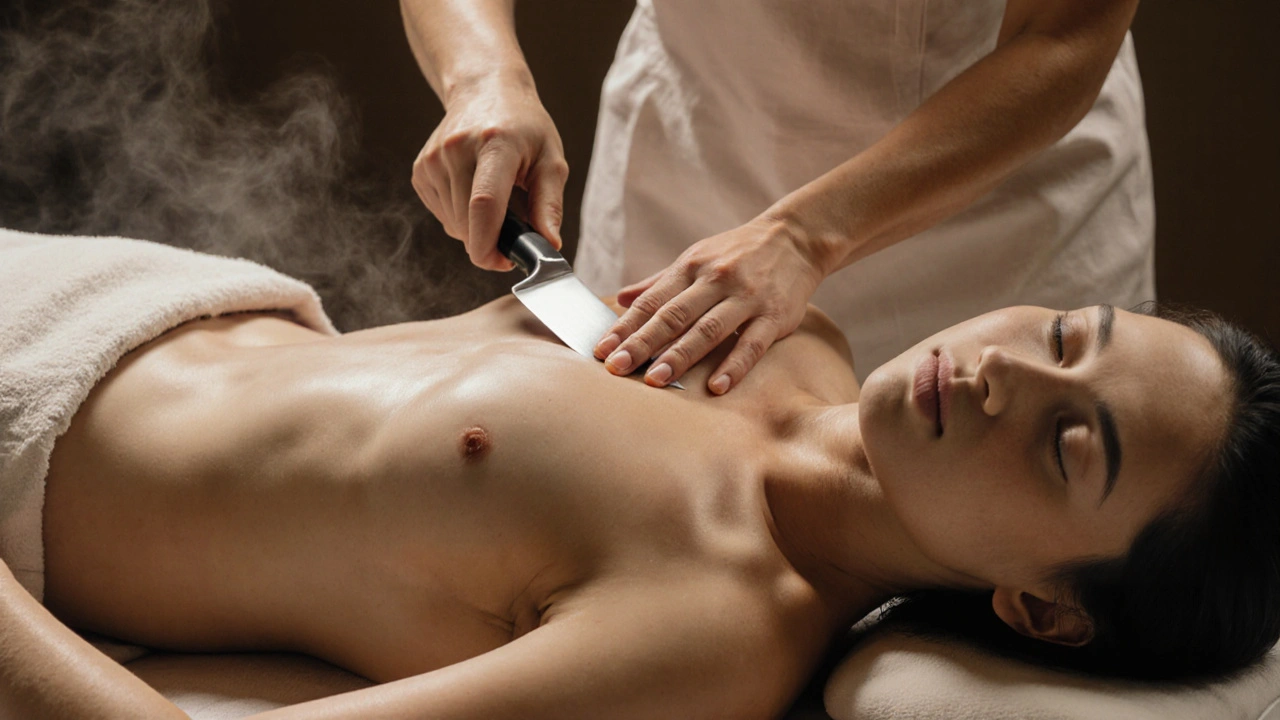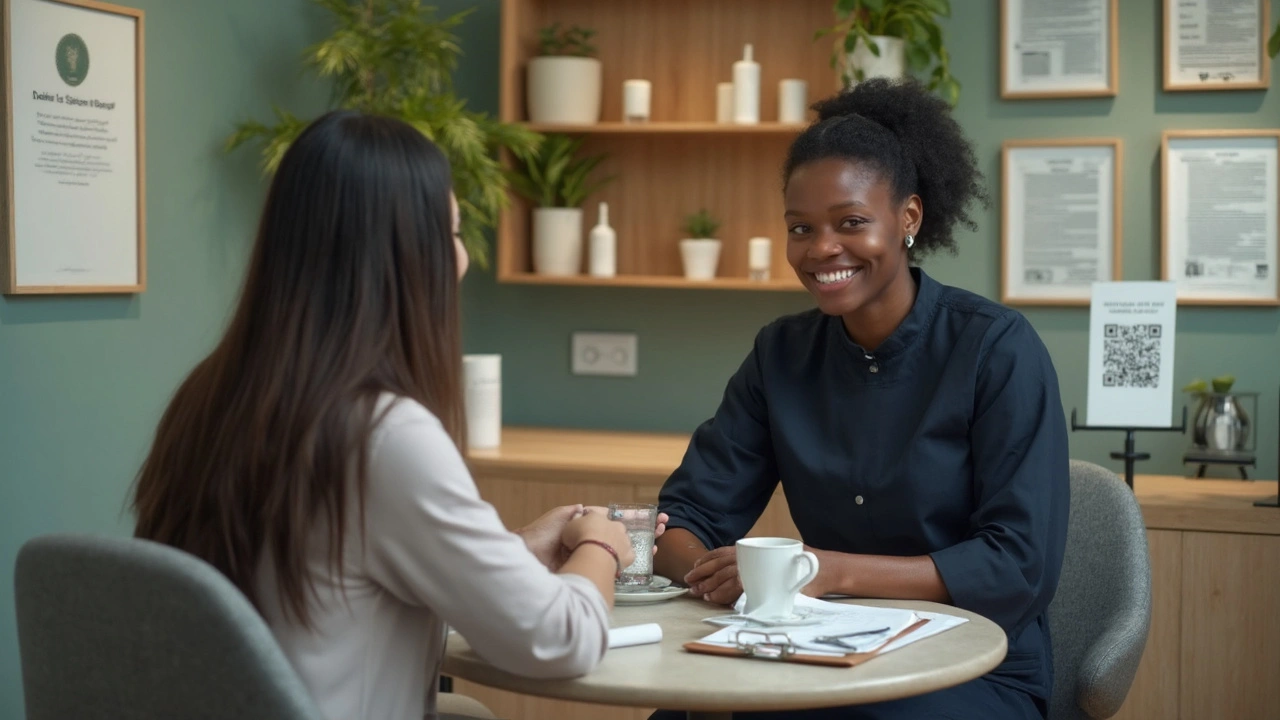Knife Massage: What It Is and How to Stay Safe
Knife massage — sometimes called blade therapy or scraping — uses flat metal tools or blunt-edged instruments to rub the skin and soft tissues. It’s built on the same idea as gua sha and IASTM (instrument-assisted soft tissue mobilization): break up tight tissue, increase blood flow, and ease movement. It can look intense, but many techniques are blunt, not sharp. Still, this is a treatment that needs care and a trained practitioner.
How knife massage works
Therapists use a smooth metal tool and controlled pressure to scrape over muscles and fascia. The friction causes a brief increase in blood flow and can create small red marks or bruises. That response is often the intended effect — it signals circulation changes and tissue release. Sessions usually target tight areas like shoulders, calves, or the back. A typical visit lasts 20–45 minutes, often combined with warm-up, light stretching, and breathing to improve results.
People report quicker relief after scar tissue, chronic tightness, or post-injury stiffness. Athletes sometimes use scraping to speed recovery between workouts. But results vary. Knife massage is not a miracle fix; it’s a tool that can work alongside rehab, strengthening, and regular movement.
Risks, safety, and aftercare
This method can cause bruises, soreness, and temporary tenderness. You should avoid knife massage if you’re on blood thinners, pregnant, have open wounds, skin infections, recent surgery, or certain vascular conditions. Always tell your therapist about medications and medical history.
Find a qualified practitioner. Check credentials, ask how they sterilize tools, and request to see informed consent and expected side effects. A good therapist explains the pressure level, checks in during work, and modifies the approach if something hurts too much.
Aftercare helps recovery: hydrate well, rest the treated area for 24–48 hours, avoid heavy exercise right away, and use gentle movement like walking or light stretching. Applying cold for the first day can ease intense soreness; after that, warmth helps circulation. If marks become swollen, hot, or unusually painful, contact a healthcare provider — signs of infection are rare but possible.
Not sure if knife massage fits? Try safer options first: traditional gua sha with a smoother tool, IASTM from a licensed physiotherapist, cupping, or guided myofascial release. These techniques give similar goals — improved circulation and tissue mobility — with lower risk for bruising and skin damage.
Knife massage can be useful when done by a trained professional and chosen for the right problem. Ask questions, watch for clean tools and clear explanations, and pick a gentler alternative if you’re worried about bruising or have health issues. Your body will thank you for careful choices and sensible aftercare.

Harmony and Healing: The Philosophy Behind Knife Massage
Knife massage is a traditional Chinese therapy using polished steel blades to release deep muscle tension and restore energy flow. Learn how it works, who it's for, and why it's more than just a strange technique.

Experience the Cutting Edge of Wellness with Knife Massage
Knife massage is an ancient healing technique using blunt metal blades to release deep muscle tension and fascial restrictions. Unlike traditional massage, it delivers precise, deep pressure without cutting the skin. Learn how it works, who benefits, and where to find certified practitioners in New Zealand.

Knife Massage (Dao Liao): Benefits, Risks, and How It Works
Curious about knife massage? Here’s what it is, how it might work, benefits, risks, safety tips, and how to choose a trained practitioner in 2025.
Categories
- Health and Wellness (148)
- Alternative Therapies (81)
- Massage Therapy (40)
- Travel and Culture (14)
- Beauty and Skincare (9)
- Holistic Health (8)
- Health and Fitness (5)
- Spirituality (5)
- Other (2)
- Personal Development (2)
Popular Articles



